Diego Valsesia
Deep Lidar-guided Image Deblurring
Dec 10, 2024



Abstract:The rise of portable Lidar instruments, including their adoption in smartphones, opens the door to novel computational imaging techniques. Being an active sensing instrument, Lidar can provide complementary data to passive optical sensors, particularly in situations like low-light imaging where motion blur can affect photos. In this paper, we study if the depth information provided by mobile Lidar sensors is useful for the task of image deblurring and how to integrate it with a general approach that transforms any state-of-the-art neural deblurring model into a depth-aware one. To achieve this, we developed a universal adapter structure that efficiently preprocesses the depth information to modulate image features with depth features. Additionally, we applied a continual learning strategy to pretrained encoder-decoder models, enabling them to incorporate depth information as an additional input with minimal extra data requirements. We demonstrate that utilizing true depth information can significantly boost the effectiveness of deblurring algorithms, as validated on a dataset with real-world depth data captured by a smartphone Lidar.
DreamCache: Finetuning-Free Lightweight Personalized Image Generation via Feature Caching
Nov 26, 2024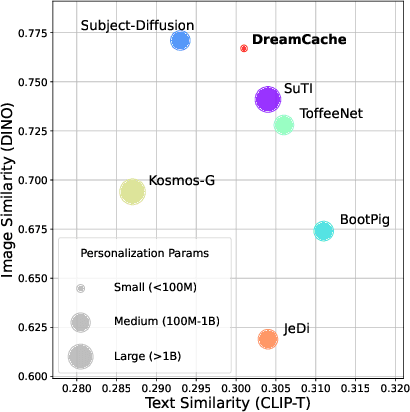
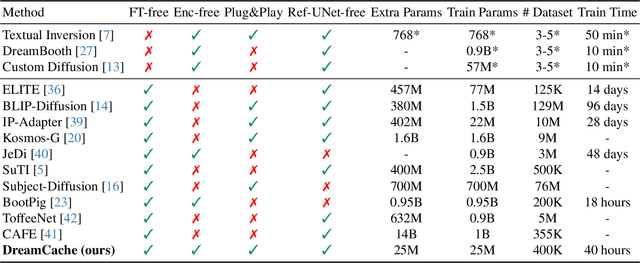
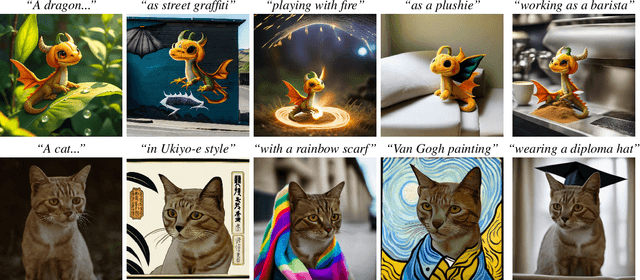
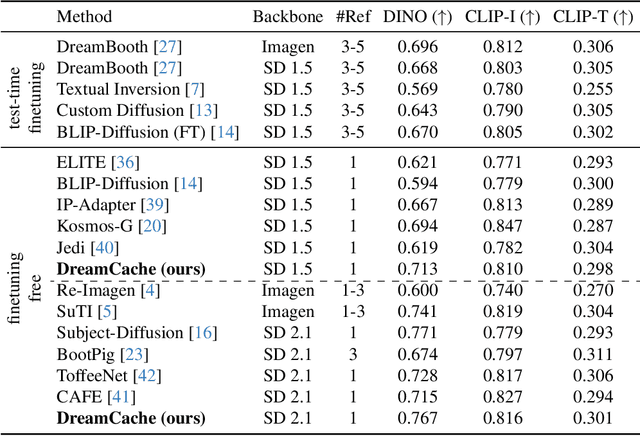
Abstract:Personalized image generation requires text-to-image generative models that capture the core features of a reference subject to allow for controlled generation across different contexts. Existing methods face challenges due to complex training requirements, high inference costs, limited flexibility, or a combination of these issues. In this paper, we introduce DreamCache, a scalable approach for efficient and high-quality personalized image generation. By caching a small number of reference image features from a subset of layers and a single timestep of the pretrained diffusion denoiser, DreamCache enables dynamic modulation of the generated image features through lightweight, trained conditioning adapters. DreamCache achieves state-of-the-art image and text alignment, utilizing an order of magnitude fewer extra parameters, and is both more computationally effective and versatile than existing models.
Efficient onboard multi-task AI architecture based on self-supervised learning
Aug 19, 2024



Abstract:There is growing interest towards the use of AI directly onboard satellites for quick analysis and rapid response to critical events such as natural disasters. This paper presents a blueprint to the mission designer for the development of a modular and efficient deep learning payload to address multiple onboard inference tasks. In particular, we design a self-supervised lightweight backbone that provides features to efficient task-specific heads. The latter can be developed independently and with reduced data labeling requirements thanks to the frozen backbone. Experiments on three sample tasks of cloud segmentation, flood detection, and marine debris classification on a 7W embedded system show competitive results with inference quality close to high-complexity state-of-the-art models and high throughput in excess of 8 Mpx/s.
MotionCraft: Physics-based Zero-Shot Video Generation
May 22, 2024Abstract:Generating videos with realistic and physically plausible motion is one of the main recent challenges in computer vision. While diffusion models are achieving compelling results in image generation, video diffusion models are limited by heavy training and huge models, resulting in videos that are still biased to the training dataset. In this work we propose MotionCraft, a new zero-shot video generator to craft physics-based and realistic videos. MotionCraft is able to warp the noise latent space of an image diffusion model, such as Stable Diffusion, by applying an optical flow derived from a physics simulation. We show that warping the noise latent space results in coherent application of the desired motion while allowing the model to generate missing elements consistent with the scene evolution, which would otherwise result in artefacts or missing content if the flow was applied in the pixel space. We compare our method with the state-of-the-art Text2Video-Zero reporting qualitative and quantitative improvements, demonstrating the effectiveness of our approach to generate videos with finely-prescribed complex motion dynamics. Project page: https://mezzelfo.github.io/MotionCraft/
Modeling uncertainty for Gaussian Splatting
Mar 27, 2024Abstract:We present Stochastic Gaussian Splatting (SGS): the first framework for uncertainty estimation using Gaussian Splatting (GS). GS recently advanced the novel-view synthesis field by achieving impressive reconstruction quality at a fraction of the computational cost of Neural Radiance Fields (NeRF). However, contrary to the latter, it still lacks the ability to provide information about the confidence associated with their outputs. To address this limitation, in this paper, we introduce a Variational Inference-based approach that seamlessly integrates uncertainty prediction into the common rendering pipeline of GS. Additionally, we introduce the Area Under Sparsification Error (AUSE) as a new term in the loss function, enabling optimization of uncertainty estimation alongside image reconstruction. Experimental results on the LLFF dataset demonstrate that our method outperforms existing approaches in terms of both image rendering quality and uncertainty estimation accuracy. Overall, our framework equips practitioners with valuable insights into the reliability of synthesized views, facilitating safer decision-making in real-world applications.
Onboard deep lossless and near-lossless predictive coding of hyperspectral images with line-based attention
Mar 26, 2024Abstract:Deep learning methods have traditionally been difficult to apply to compression of hyperspectral images onboard of spacecrafts, due to the large computational complexity needed to achieve adequate representational power, as well as the lack of suitable datasets for training and testing. In this paper, we depart from the traditional autoencoder approach and we design a predictive neural network, called LineRWKV, that works recursively line-by-line to limit memory consumption. In order to achieve that, we adopt a novel hybrid attentive-recursive operation that combines the representational advantages of Transformers with the linear complexity and recursive implementation of recurrent neural networks. The compression algorithm performs prediction of each pixel using LineRWKV, followed by entropy coding of the residual. Experiments on the HySpecNet-11k dataset and PRISMA images show that LineRWKV is the first deep-learning method to outperform CCSDS-123.0-B-2 at lossless and near-lossless compression. Promising throughput results are also evaluated on a 7W embedded system.
Deep 3D World Models for Multi-Image Super-Resolution Beyond Optical Flow
Jan 30, 2024



Abstract:Multi-image super-resolution (MISR) allows to increase the spatial resolution of a low-resolution (LR) acquisition by combining multiple images carrying complementary information in the form of sub-pixel offsets in the scene sampling, and can be significantly more effective than its single-image counterpart. Its main difficulty lies in accurately registering and fusing the multi-image information. Currently studied settings, such as burst photography, typically involve assumptions of small geometric disparity between the LR images and rely on optical flow for image registration. We study a MISR method that can increase the resolution of sets of images acquired with arbitrary, and potentially wildly different, camera positions and orientations, generalizing the currently studied MISR settings. Our proposed model, called EpiMISR, moves away from optical flow and explicitly uses the epipolar geometry of the acquisition process, together with transformer-based processing of radiance feature fields to substantially improve over state-of-the-art MISR methods in presence of large disparities in the LR images.
Fast Inference in Denoising Diffusion Models via MMD Finetuning
Jan 19, 2023
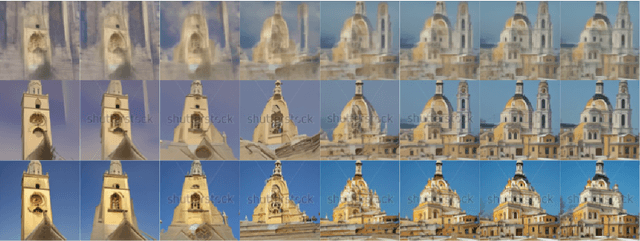


Abstract:Denoising Diffusion Models (DDMs) have become a popular tool for generating high-quality samples from complex data distributions. These models are able to capture sophisticated patterns and structures in the data, and can generate samples that are highly diverse and representative of the underlying distribution. However, one of the main limitations of diffusion models is the complexity of sample generation, since a large number of inference timesteps is required to faithfully capture the data distribution. In this paper, we present MMD-DDM, a novel method for fast sampling of diffusion models. Our approach is based on the idea of using the Maximum Mean Discrepancy (MMD) to finetune the learned distribution with a given budget of timesteps. This allows the finetuned model to significantly improve the speed-quality trade-off, by substantially increasing fidelity in inference regimes with few steps or, equivalently, by reducing the required number of steps to reach a target fidelity, thus paving the way for a more practical adoption of diffusion models in a wide range of applications. We evaluate our approach on unconditional image generation with extensive experiments across the CIFAR-10, CelebA, ImageNet and LSUN-Church datasets. Our findings show that the proposed method is able to produce high-quality samples in a fraction of the time required by widely-used diffusion models, and outperforms state-of-the-art techniques for accelerated sampling. Code is available at: https://github.com/diegovalsesia/MMD-DDM.
Rethinking the compositionality of point clouds through regularization in the hyperbolic space
Sep 21, 2022
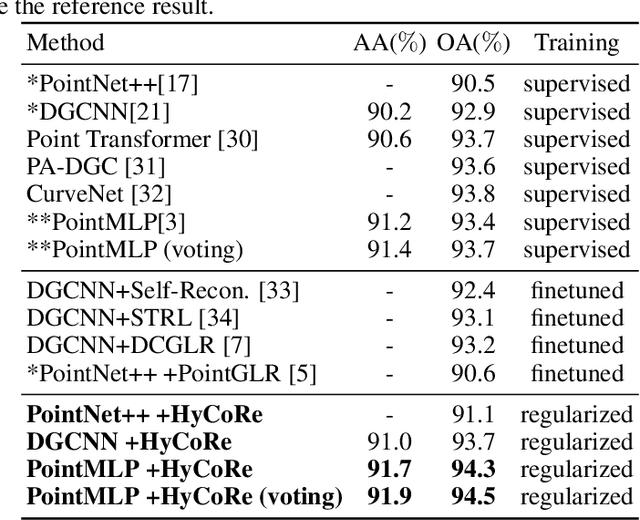
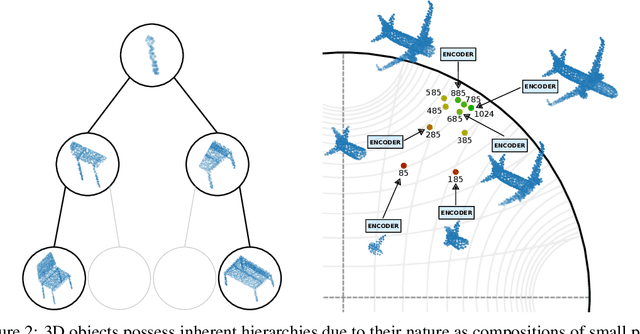
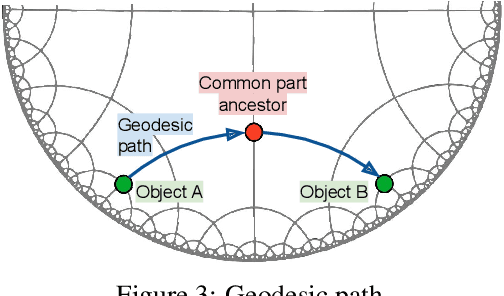
Abstract:Point clouds of 3D objects exhibit an inherent compositional nature where simple parts can be assembled into progressively more complex shapes to form whole objects. Explicitly capturing such part-whole hierarchy is a long-sought objective in order to build effective models, but its tree-like nature has made the task elusive. In this paper, we propose to embed the features of a point cloud classifier into the hyperbolic space and explicitly regularize the space to account for the part-whole hierarchy. The hyperbolic space is the only space that can successfully embed the tree-like nature of the hierarchy. This leads to substantial improvements in the performance of state-of-art supervised models for point cloud classification.
Cross-modal Learning for Image-Guided Point Cloud Shape Completion
Sep 20, 2022



Abstract:In this paper we explore the recent topic of point cloud completion, guided by an auxiliary image. We show how it is possible to effectively combine the information from the two modalities in a localized latent space, thus avoiding the need for complex point cloud reconstruction methods from single views used by the state-of-the-art. We also investigate a novel weakly-supervised setting where the auxiliary image provides a supervisory signal to the training process by using a differentiable renderer on the completed point cloud to measure fidelity in the image space. Experiments show significant improvements over state-of-the-art supervised methods for both unimodal and multimodal completion. We also show the effectiveness of the weakly-supervised approach which outperforms a number of supervised methods and is competitive with the latest supervised models only exploiting point cloud information.
 Add to Chrome
Add to Chrome Add to Firefox
Add to Firefox Add to Edge
Add to Edge